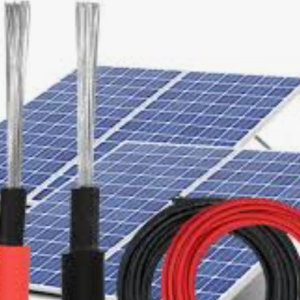The sun, a natural source of energy, has been harnessed by humans for centuries, but it’s only in recent times that we’ve begun to tap into its full potential. Solar energy, once a novelty, is now a cornerstone of our efforts to combat climate change. One of the unsung heroes in this quest is the solar cable. These cables are the veins and arteries that carry the lifeblood of solar power systems, and their recyclability is a key factor in the environmental benefits they provide. Let’s dive into the world of solar cables, specifically focusing on the 4mm2 variety and the UL certified cables, and explore their green credentials.

UL solar cable: The Green Standard UL stands for Underwriters Laboratories, a global safety certification company that tests products for public safety. When we talk about UL solar cables, we’re referring to cables that have passed rigorous tests to ensure they meet specific safety and performance standards. These cables are not just durable and reliable; they’re also designed with the environment in mind. The UL certification is a mark of quality that consumers can trust, knowing that the products they’re using are both safe and eco-friendly.
solar cable 4mm2: Powering Sustainability The 4mm2 solar cable is a workhorse in the solar industry. With a cross-sectional area of 4 square millimeters, it’s capable of carrying a significant amount of current, making it ideal for large-scale solar installations. This size of cable is often used for connecting solar panels to inverters, ensuring that the power generated is efficiently transmitted. The environmental benefits of using a 4mm2 solar cable extend beyond its role in energy transmission. The material used in these cables is often recyclable, contributing to a circular economy and reducing waste.
Recyclability: A Key Environmental Asset Recyclability is a feature that sets solar cables apart in the race towards a greener future. When solar cables are made from recyclable materials, they can be repurposed at the end of their life cycle, reducing the demand for new raw materials and the energy required to produce them. This not only conserves natural resources but also reduces the carbon footprint associated with manufacturing new cables. The process of recycling solar cables also helps to keep harmful materials out of landfills, further mitigating the environmental impact.
Energy Efficiency and Carbon Footprint Reduction The energy efficiency of solar cables is another aspect of their environmental benefits. High-quality solar cables, like the UL solar cables, ensure that the power generated by solar panels is transmitted with minimal loss. This efficiency is crucial in maximizing the output of solar energy systems and reducing the overall carbon footprint. By minimizing energy loss, we can ensure that more of the sun’s energy is converted into usable power, reducing our reliance on fossil fuels and decreasing greenhouse gas emissions.
The Role of Solar Cables in Large-Scale Solar Farms Large-scale solar farms are becoming increasingly common as the world turns to renewable energy sources. In these installations, the role of solar cables is paramount. The 4mm2 solar cable, with its high current-carrying capacity, is often the cable of choice for these large arrays. The durability and reliability of these cables ensure that the solar farm operates efficiently, with minimal downtime. Moreover, the recyclability of these cables means that at the end of their service life, they can be recycled, contributing to the sustainability of the solar farm as a whole.
Sustainable Manufacturing Practices The manufacturing of solar cables, particularly UL solar cables, often involves sustainable practices that minimize environmental impact. These practices can include the use of renewable energy in the production process, reducing waste, and implementing energy-efficient technologies. By adopting such practices, manufacturers can reduce the carbon footprint of their operations and contribute to the overall sustainability of the solar industry.
The Future of Solar Cables: Innovation and Sustainability As technology advances, so too does the development of solar cables. We can expect to see further innovations in the materials and manufacturing processes used to create these cables. These innovations will likely focus on improving the efficiency, durability, and recyclability of solar cables. The goal is to create a product that not only performs well but also has a minimal environmental impact throughout its lifecycle. The future of solar cables is bright, with a strong emphasis on sustainability and environmental responsibility.
The Ripple Effect of Using Recyclable Solar Cables The use of recyclable solar cables has a ripple effect on the environment and the economy. By choosing to use these cables, we’re not only reducing waste and conserving resources but also supporting a growing industry that values sustainability. This choice sends a strong message to manufacturers and consumers alike about the importance of eco-friendly practices. It encourages further investment in renewable energy technologies and promotes a shift towards a more sustainable future.
In Conclusion The environmental benefits of using recyclable solar cables, such as the UL solar cables and the 4mm2 solar cable, are manifold. From conserving resources and reducing waste to promoting energy efficiency and supporting sustainable manufacturing practices, these cables play a crucial role in our transition to a greener world. As we continue to explore and develop new renewable energy technologies, the importance of recyclable solar cables will only grow. Let’s embrace the green potential of these cables and contribute to a brighter, more sustainable future.



